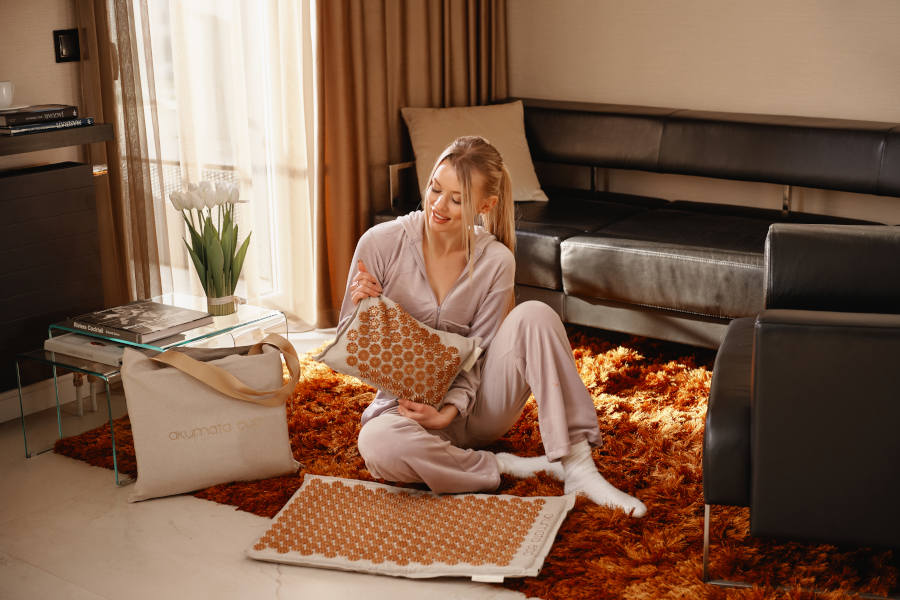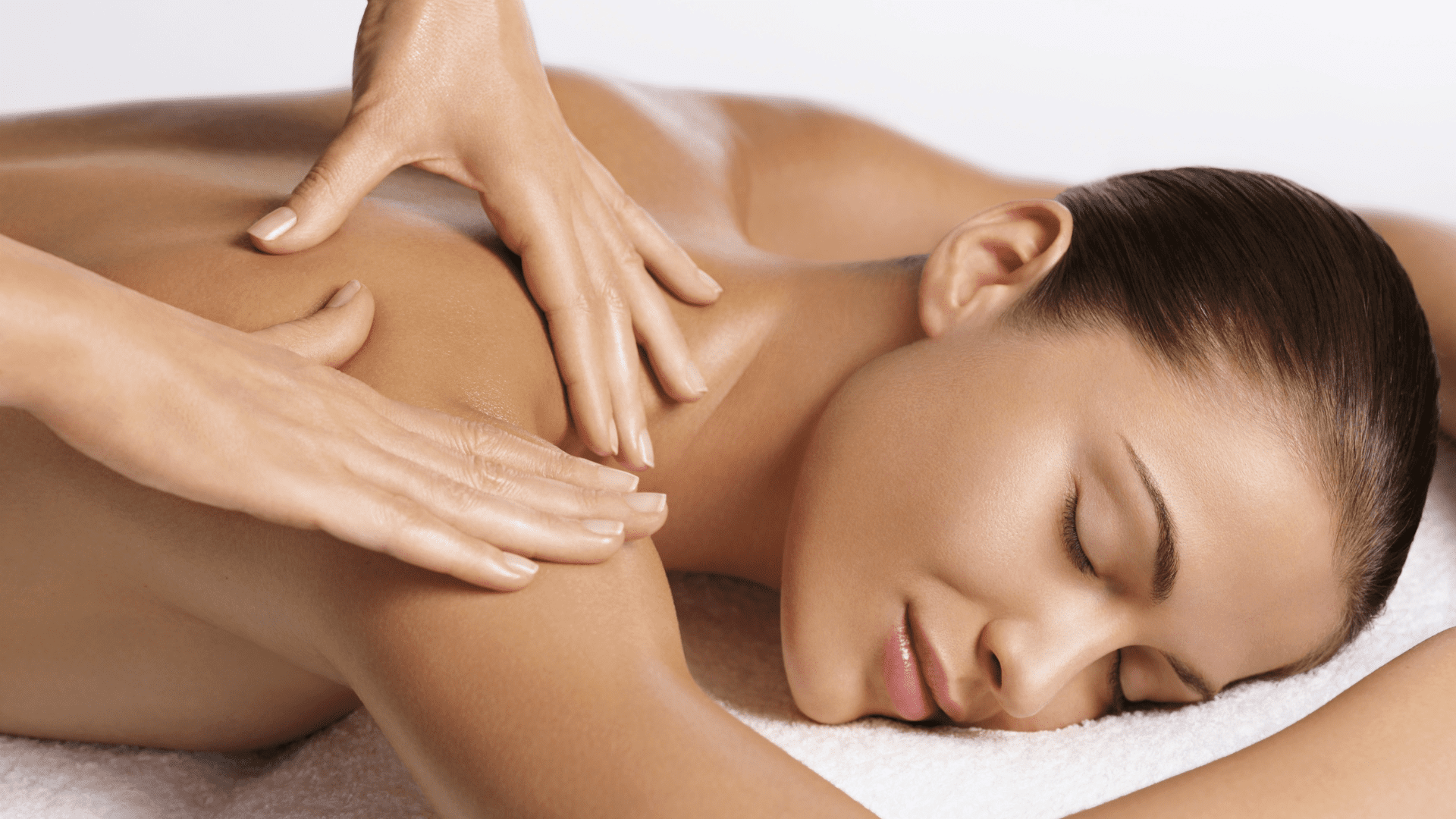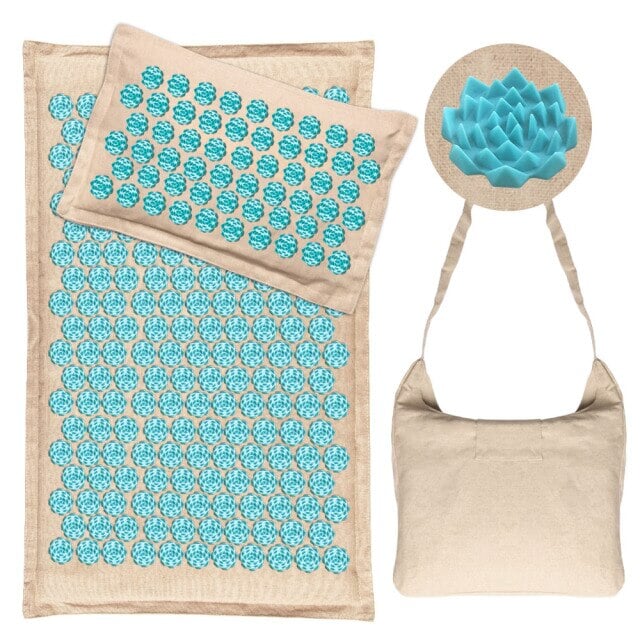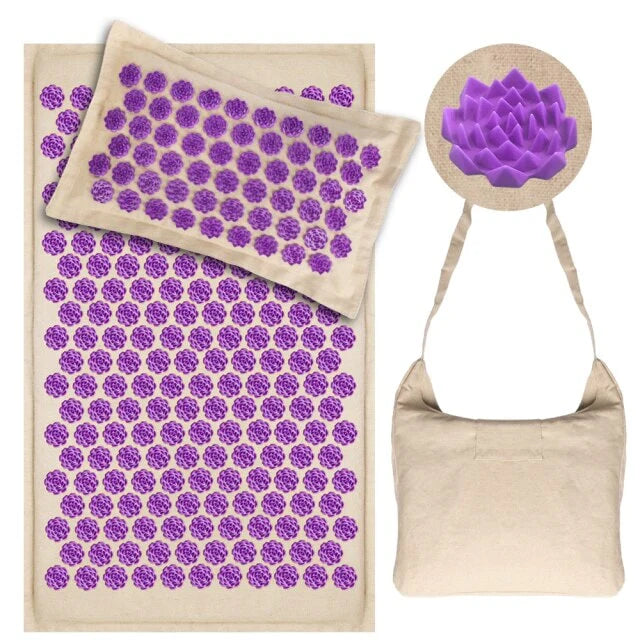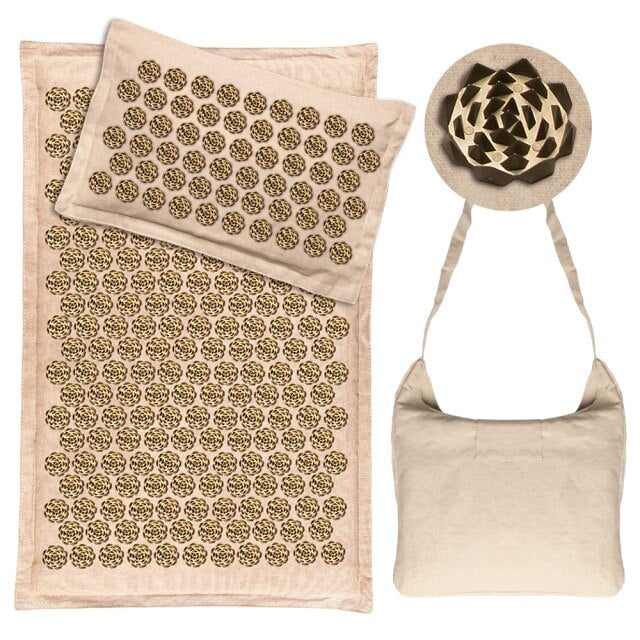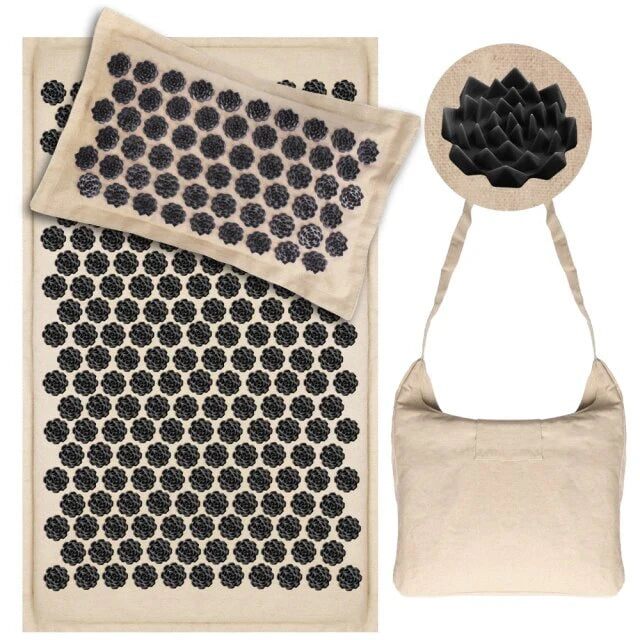Comprender los principios de la acupresión

Definición y orígenes tradicionales
La acupresión es una forma de medicina alternativa con raíces en la Medicina Tradicional China (MTC) . Consiste en aplicar presión en puntos específicos del cuerpo humano llamados acupuntos. Los profesionales utilizan los dedos, el pulgar, la palma o incluso los codos para aplicar la presión.
Esta práctica está diseñada para restablecer el flujo de energía vital, o "qi", a través de canales conocidos como meridianos. Según la teoría de la medicina china , los bloqueos en estos meridianos alteran el equilibrio del yin y el yang, lo que provoca problemas de salud. El objetivo de la acupresión es restablecer el equilibrio y promover la curación.
Diferencias entre acupresión y acupuntura
La acupresión y la acupuntura comparten principios similares, centrándose en la estimulación de puntos de acupuntura para tratar diversos síntomas. Sin embargo, mientras que la acupuntura utiliza agujas finas, la acupresión se basa en la presión manual.
La acupresión a veces se compara con la reflexología, ya que ambas implican presionar puntos para influir en la salud general. Aunque la acupresión no utiliza agujas , puede ser igual de efectiva, especialmente para quienes prefieren terapias no invasivas.
¿Cómo funciona la acupresión a nivel fisiológico?

Los mecanismos detrás de los efectos de la acupresión
La evidencia científica sugiere que la acupresión funciona aplicando presión en puntos específicos, lo que estimula el flujo sanguíneo , desencadena la liberación de endorfinas y estimula las respuestas naturales de curación del cuerpo. Al aplicar presión en un punto de acupresión, se ayuda a relajar los músculos tensos y a aliviar el dolor.
Esta presión puede alterar la transmisión de las señales de dolor al cerebro, reduciendo el dolor crónico y mejorando el bienestar general. Estudios también indican que la acupresión puede influir en el sistema nervioso, lo que la convierte en una técnica útil para el manejo del dolor y el alivio de la ansiedad.
Estudios basados en evidencia e investigación en curso
Investigaciones recientes, que incluyen revisiones sistemáticas y ensayos controlados, han explorado la eficacia de la acupresión en el manejo de diversas afecciones. Estudios publicados en la Base de Datos Cochrane demuestran que la acupresión ayuda a reducir las náuseas y los vómitos en pacientes sometidos a quimioterapia.
Otros ensayos clínicos han examinado el uso de la acupresión para las náuseas posoperatorias, el manejo de la ansiedad y el dolor crónico. Estos hallazgos respaldan los efectos terapéuticos de la acupresión, especialmente cuando se utiliza como terapia complementaria.
Beneficios de la acupresión y sus aplicaciones terapéuticas

Alivio del dolor y la tensión
Uno de los principales beneficios de la acupresión es su capacidad para aliviar el dolor y reducir la tensión corporal . Al actuar sobre puntos de acupresión específicos, la acupresión puede controlar eficazmente el dolor crónico, las cefaleas y la rigidez muscular.
Se utiliza a menudo como técnica para aliviar el dolor de cuello, articulaciones o cefaleas tensionales. Los profesionales aplican presión para estimular la circulación y aliviar las molestias, ofreciendo una alternativa natural a los tratamientos médicos.
Apoyando el bienestar mental y emocional
La acupresión también es eficaz para abordar problemas de salud emocional y mental . Se ha demostrado que ayuda a reducir el estrés, promueve la relajación y mejora la calidad del sueño.
Al estimular los puntos de acupuntura relacionados con la ansiedad y el insomnio, la acupresión puede ayudar a las personas a sentirse más tranquilas. Para quienes enfrentan el manejo de la ansiedad, la acupresión es una herramienta valiosa para lograr el equilibrio emocional y promover el bienestar general.
¿Qué sucede durante una sesión de acupresión?

El proceso de un tratamiento de acupresión
Durante una sesión de acupresión, un masajista o terapeuta colegiado comienza evaluando los síntomas y el historial médico del paciente. A continuación, identifica los puntos de acupresión relevantes según su estado. Mediante técnicas que involucran los dedos, pulgares o palmas, el masajista aplica una presión manual constante en los puntos seleccionados.
Las sesiones suelen durar entre 30 y 60 minutos , y los clientes pueden experimentar una sensación de calor, hormigueo o movimiento en la zona afectada. Estas sensaciones indican un mayor flujo de energía y una mejor circulación.
Precauciones y consideraciones de seguridad
Si bien la acupresión suele ser segura, es fundamental consultar con un profesional de la salud antes de comenzar, especialmente en mujeres embarazadas o personas con afecciones específicas. Si bien la acupresión es segura para las embarazadas, es fundamental evitar ciertos puntos de acupresión que podrían inducir el parto.
Los profesionales capacitados en técnicas de acupresión para embarazadas pueden adaptar las sesiones para garantizar su seguridad y eficacia. Si tiene problemas médicos importantes, lo mejor es consultar con un médico o profesional de la salud.
Integrando la acupresión con las prácticas de salud modernas

Combinando la acupresión con otros enfoques terapéuticos
En los últimos años, la acupresión se ha combinado con otras prácticas de bienestar para mejorar su eficacia. Por ejemplo, integrar la acupresión con el masaje terapéutico ayuda a reducir la tensión muscular y promueve la relajación.
También se combina frecuentemente con reflexología, meditación guiada y aromaterapia para un enfoque integral de la salud. La terapia de acupresión funciona estimulando puntos específicos de acupuntura y, al combinarla con otras prácticas, ayuda a potenciar sus beneficios.
El auge de los dispositivos de acupresión y las herramientas de autocuidado
La acupresión ya no se limita a las clínicas profesionales. Dispositivos de autocuidado como las esterillas de acupresión permiten practicarla en casa, aplicando presión constante en puntos clave sin necesidad de un profesional. Estas herramientas están diseñadas para imitar los efectos de la acupresión manual, trabajando puntos de acupresión en los pies, la espalda y otras zonas.
La aplicación de presión con tapetes de acupresión ha ganado popularidad como un método accesible para controlar síntomas como el dolor crónico, el insomnio y el estrés .
Conclusión

La acupresión es una práctica versátil y de eficacia comprobada, con profundas raíces en la Medicina Tradicional China. Mediante la aplicación de presión en puntos específicos a lo largo de los meridianos, la acupresión busca restablecer el flujo de energía, aliviar el dolor y mejorar el bienestar general .
Ya sea realizada por un profesional capacitado o practicada a través de herramientas de autocuidado como tapetes de acupresión, esta antigua técnica sigue siendo una parte valiosa de la medicina integrativa moderna.
Estudios en curso e investigaciones basadas en evidencia continúan validando su eficacia en la promoción de la salud física y emocional , haciendo de la acupresión una opción accesible y confiable para quienes buscan alternativas naturales a los tratamientos convencionales.
Preguntas frecuentes
1. ¿Qué es la acupresión y cómo funciona?
La acupresión es una técnica terapéutica con raíces en la antigua medicina china que consiste en aplicar presión en puntos específicos del cuerpo , llamados acupuntos . Esta técnica se basa en el concepto de meridianos, que se cree que conectan los órganos y las vías energéticas del cuerpo.
Se aplica presión en puntos específicos con los dedos, pulgares o codos, estimulándolos para aliviar síntomas como náuseas, dolor y estrés. Al igual que la acupuntura china, la acupresión busca restablecer el flujo de energía vital (qi) y promover la sanación corporal.
2. ¿Cómo ayuda la acupresión a aliviar el dolor?
La acupresión ayuda a aliviar el dolor al actuar sobre puntos específicos que corresponden a diversas partes del cuerpo. Al aplicar presión, se estimula la liberación de endorfinas , que actúan como analgésicos naturales del cuerpo.
La acupresión es una técnica que aplica presión para relajar los tejidos blandos y mejorar la circulación sanguínea, lo que la hace eficaz para el manejo de los síntomas. La evidencia científica y los ensayos controlados han demostrado que la acupresión trata eficazmente afecciones como el dolor crónico, las cefaleas tensionales y las molestias cervicales.
3. ¿La acupresión es efectiva para las náuseas?
Sí, la acupresión es eficaz para reducir las náuseas , especialmente en pacientes sometidos a quimioterapia o con náuseas matutinas. Un punto de acupresión comúnmente utilizado para las náuseas es el punto P6 (Neiguan), ubicado en la parte interna de la muñeca.
Se ha demostrado en la práctica clínica que presionar este punto de acupuntura ayuda a reducir las náuseas y los vómitos. Investigadores que realizan estudios de meridianos y ensayos controlados aleatorizados han descubierto que esta técnica puede aliviar las náuseas en pacientes con cáncer y otras afecciones médicas.
4. ¿Cómo mejora la acupresión la calidad del sueño?
La acupresión puede ayudar a mejorar la calidad del sueño al actuar sobre puntos específicos asociados con la relajación y la reducción del estrés. La presión manual aplicada en la acupresión estimula estos puntos para promover una sensación de calma, lo que facilita el sueño.
La acupresión promueve la relajación y mejora el equilibrio del yin y el yang, elementos clave para mantener la salud general según los antiguos principios chinos. La evidencia sugiere que la acupresión es eficaz para tratar el insomnio y mejorar los patrones generales de sueño.
5. ¿Qué afecciones puede tratar la acupresión?
La acupresión es eficaz para tratar una amplia gama de afecciones, como dolor crónico, dolores de cabeza, náuseas, problemas digestivos y síntomas relacionados con el estrés . También se utiliza para el manejo de síntomas en pacientes con cáncer, en particular en aquellos que se someten a tratamiento contra el cáncer de mama.
La acupresión para el manejo de síntomas ayuda no solo a abordar el malestar físico, sino también el bienestar emocional. Las terapias complementarias, como la acupresión, pueden combinarse con tratamientos convencionales para mejorar la salud general.
6. ¿Qué sucede durante una sesión de acupresión?
Durante una sesión de acupresión, un profesional o acupunturista capacitado evalúa los síntomas del paciente e identifica los puntos de acupresión relevantes. A continuación, utiliza los dedos, las palmas o incluso los codos para aplicar una presión manual constante .
Las sesiones suelen durar entre 30 y 60 minutos, y los clientes pueden sentir sensaciones como calor u hormigueo, lo que indica un aumento del flujo sanguíneo y energético en los meridianos. Esta práctica tradicional busca restablecer el equilibrio y mejorar la salud general.
7. ¿En qué se diferencia la acupresión de la acupuntura?
La diferencia clave entre la acupresión y la acupuntura radica en el método de estimulación . Mientras que la acupuntura utiliza agujas para estimular los puntos de acupuntura, la acupresión utiliza los dedos, los pulgares o herramientas especializadas para aplicar presión.
Ambas técnicas comparten principios similares y se enfocan en los mismos puntos de acupuntura para promover la curación y restablecer el flujo energético. La acupresión es una excelente alternativa para quienes prefieren una terapia no invasiva o se sienten incómodos con las agujas de acupuntura.
8. ¿Se puede realizar la acupresión en casa?
Sí, con la guía adecuada, la acupresión se puede realizar en casa . Existen diversas técnicas y herramientas de autocuidado, como las esterillas de acupresión, diseñadas para aplicar una presión constante en los puntos clave.
Aprender técnicas básicas de acupresión mediante videos, tutoriales y consultas con un profesional puede ayudar a las personas a controlar eficazmente síntomas como náuseas, estrés y dolor muscular. Sin embargo, para problemas de salud graves, se recomienda consultar con un profesional de la salud o un acupunturista capacitado.
9. ¿Es segura la acupresión durante el embarazo?
La acupresión durante el embarazo puede ser segura si se realiza correctamente y con la guía adecuada . Se deben evitar ciertos puntos de acupresión durante el embarazo, ya que podrían inducir el parto. Sin embargo, la acupresión también puede ayudar a aliviar síntomas comunes del embarazo, como náuseas matutinas, dolor de espalda y ansiedad.
Consulte con un profesional de la salud antes de la acupresión para garantizar que la terapia sea segura y se adapte a las necesidades individuales. Los profesionales capacitados saben qué puntos evitar y cuáles son seguros para promover la relajación y el alivio.
10. ¿Qué dice la evidencia científica sobre la acupresión?
Cada vez hay más evidencia científica que respalda la eficacia de la acupresión para diversas afecciones de salud. Estudios y revisiones sistemáticas publicados en revistas como la Base de Datos Cochrane han demostrado que la acupresión es eficaz para controlar las náuseas y los vómitos, el dolor crónico y la ansiedad.
La evidencia sugiere que la acupresión es eficaz para aliviar los síntomas y promover la relajación. Estudios en curso sobre su eficacia confirman su papel como terapia complementaria fiable tanto en la acupuntura médica como en las prácticas sanitarias convencionales.
